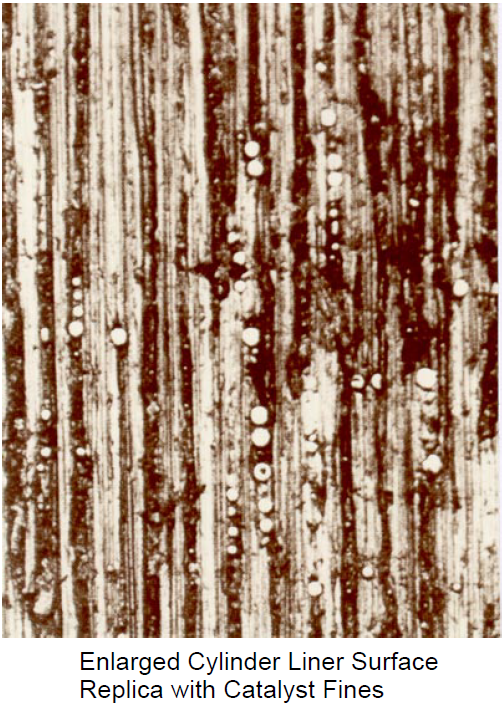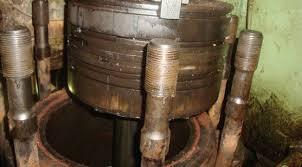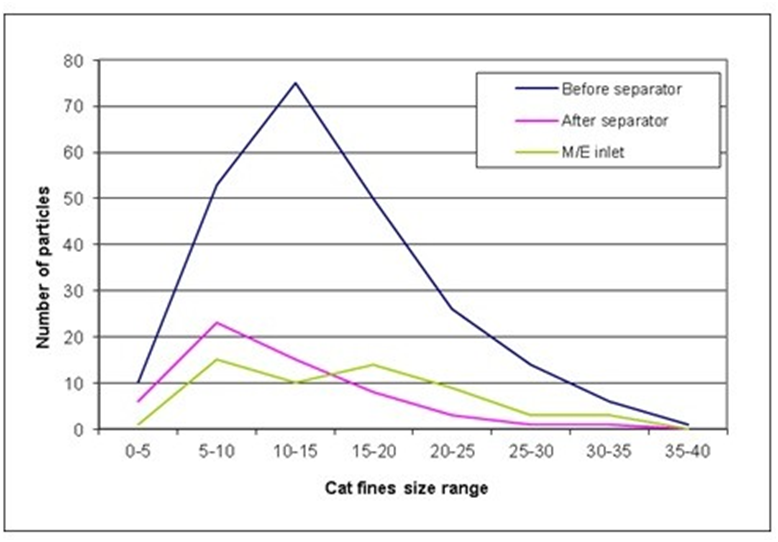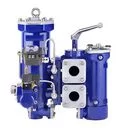Catalyst Fines (Al & Si)

What you should know about Catalyst fines (“Cat fines”)
What are Catalyst Fines (Cat Fines)?
- The fines are particles of spent aluminum and silicon catalyst that arise from the catalytic cracking process in the refinery.
- The fines are in a form of complex alumino-silicates and, depending on the catalyst used, vary both in size and hardness.

What could happen to equipment running with high cat fines?
- If not reduced by suitable treatment, the abrasive nature of these fines will damage the engine, particularly fuel pumps, injectors, piston rings and liners. In extreme cases, where the cat fines find their way into the stuffing boxes, piston rods, especially those not surface- hardened, may also be severely affected.
Why is it important for all players involved?
According to data available. Cat fines damage claims are rising as per one of the Top CLUB.

What is the International Standard for an acceptable level of cat fines?
- The current International Standard for an acceptable level of cat fines is set at a maximum of 80 mg/kg, or parts per million (ppm).
- Most engine manufacturers would expect “cat fine” levels to be around 15 mg/kg or ppm for their machinery to operate without unusual wear and tear.
- The ISO standard is likely to remain unchanged for several years and for the moment there is a substantial mismatch between ISO standards and engine manufacturers’ recommendations
Way to reduce level of cat fines on board........
- Reduction of catalyst fines to an acceptable level for inlet to the engine takes place in the settling tank and the centrifuge.
- The extent of this reduction depends on the water content of the fuel, as catalyst fines are “hydrophilic”, in that they attract water and become contained in a water shell.
How?
- Settling tanks – allow fuel to settle and frequently drain tanks
- Run purifiers in parallel, with minimum throughput (just to maintain level in service tank)
- Pre-heat fuel as much possible to 98oC which will allow proper separation of water and Al + Si particles
- Frequently drain service tanks
- Backwash auto filters – do not reuse drained fuels!
Catalyst Fines (Al & Si)
80 mg/kg, ISO (Spec) Limit
76mg/Kg 61 mg/kg 23mg/kg 22.5mg/Kg
Bunker Tk 1 Bunker TK2 Settling Seperator Service tank
5% 20% 62% 2%
Table 1 : Above-Schematic overview of reducing level of Cat Fines on board
Picture 2:

Not all cat fines sizes will damage engine equally; most dangerous and frequent are particles between 10-20 microns as it tends to stick significantly to piston rings thus additionally increasing level of cylinder liner wear
DISCUSSION!
What is auto backwash filter?
Automatic Backwash Filters and Strainers.
BOLLFILTER automatic filters and strainers are automatic backwash units for the filtration of low-viscosity liquids. The filters guarantee uninterrupted and trouble-free operation of industrial or maritime plants and engines.
How often should you backwash a water filter?
“How often should I backwash my sand filter”? Ensure you do it if there's an algae outbreak or after a significant storm. A DE( diatomaceous earth)filter system needs cleaning six or more times each year. If you have a sand filter, backwash it every month and tear it down twice every year.
How long does a backwash filter last?
Catalytic carbon backwash filters typically need media changed every 4-6 years. A water softener resin bed normally lasts 5 to 10 years.
What is auto filter for?
Use the AutoFilter feature to find, show, or hide values—in one or more columns of data. You can filter based on choices you make from a list, or search to find the data that you seek. When you filter data, entire rows will be hidden if the values in one or more columns don't meet the filtering criteria.
How does self-cleaning filters work?
In a self-cleaning strainer, a rigid cylinder screen strains particles from a water source, trapping debris on the inside. This layer of buildup causes differential pressure across the inlet and outlet. A controller monitors the filter and opens a flush valve when it senses adequate differential pressure.
What is the difference between rinse and backwash?
What the backwash does is unsettle the sand and push out the fine debris. The rinse then expels the debris and compacts the sand again to prepare the filter to catch more dirt.
Automatic Backwash Filters and Strainers (BOLLFILTER TYPE)
Fully Automatic Filtration
BOLLFILTER automatic filters and strainers are automatic backwash units for the filtration of low-viscosity liquids. The filters guarantee uninterrupted and trouble-free operation of industrial or maritime plants and engines. Your advantage: With these reliable filter systems you also extend the maintenance intervals, thereby keeping your operating costs low and avoiding unwanted production shutdowns.
Functionality of the Self-cleaning Filters
Filtration Stage
The medium flows through the filter element either from inside to outside or from outside to inside. Here the dirt particles are retained and the cleaned medium reaches the filter outlet. When the differential pressure reaches a certain value, a signal is transmitted from the differential pressure indicator to the control unit, which automatically triggers the backwashing process.
Backflushing Phase
When the differential pressure reaches a certain value, the differential pressure indicator transmits a signal to the control system, which automatically triggers the backwashing process. During backflushing, the dirt particles are flushed off of the filtration surface by filtered fluid reversal of flow (own medium or through external flush medium, compressed air or service water).
The following automatic filters can be used, depending on the flow rates, rate of filtration and fluids. Here you find an overview of our automatic backwash filters (self-cleaning):
 Automatic Type 6.21/6.22 Cost effective fuel oil filter
Automatic Type 6.21/6.22 Cost effective fuel oil filter


